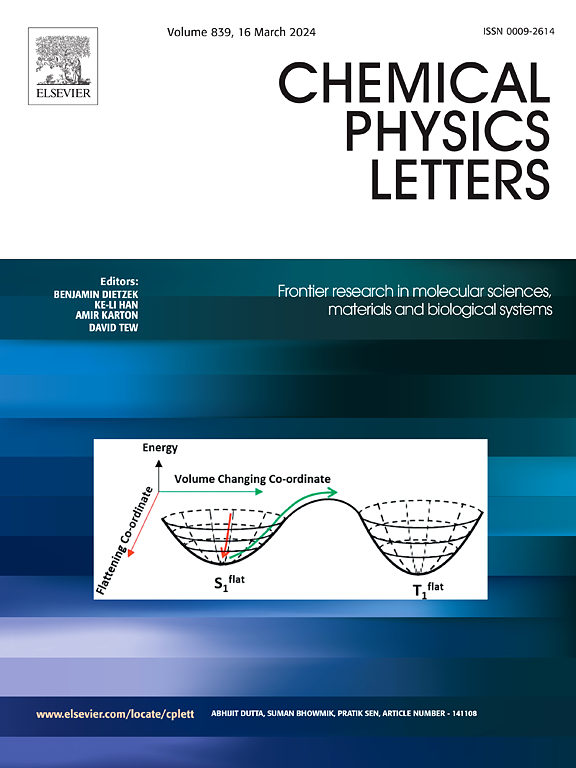协同MoS2@MWCNT纳米复合材料用于高效催化和能源应用
IF 3.1
3区 化学
Q3 CHEMISTRY, PHYSICAL
引用次数: 0
摘要
MoS2-MWCNT复合异质结具有作为电催化剂和储能材料的潜力。该复合材料具有优异的电化学性能,比电容为263 F/g,能量密度为16.89 Wh/kg,功率密度为478 W/kg。利用CV曲线分析了电荷存储机制,发现阳极和阴极过程的b值分别为0.48和0.45,表明其具有扩散控制行为。扩散系数分别为6.44 × 10−7 cm2/s(阳极)和11.32 × 10−7 cm2/s(阴极)。在使用MoS2-MWCNT和活性炭(AC)构建的器件中,我们观察到比电容为18.71 F/g,能量密度为5.09 Wh/kg,功率密度为833 W/kg。经过稳定性测试,电化学阻抗谱(EIS)显示串联电阻略有增加,从2.33 Ω上升到2.49 Ω。MoS2-MWCNT复合材料也表现出优异的电催化性能。析氢反应(HER)的过电位为0.221 V,塔菲尔斜率为0.321 V/dec。经稳定性检验,Rs和Rct值分别为4.86 Ω和2.57 Ω。对于析氧反应(OER),复合材料的过电位为597 mV, Tafel斜率为0.285 V/dec,后稳定Rs和Rct值分别为5.63 Ω和5.57 Ω。这些发现突出了MoS2-MWCNT复合材料在储能和水分解方面的多功能性。本文章由计算机程序翻译,如有差异,请以英文原文为准。
Synergistic MoS2@MWCNT nanocomposites for high-efficiency catalysis and energy applications
The MoS2-MWCNT composite heterojunction for its potential as an electrocatalyst and energy storage material. The composite demonstrated remarkable electrochemical performance, achieving a specific capacitance of 263 F/g, an energy density of 16.89 Wh/kg, and a power density of 478 W/kg. Using CV profiles, we analyzed the charge storage mechanism and found that the anodic and cathodic processes had b values of 0.48 and 0.45, respectively, indicating diffusion-controlled behavior. Diffusion coefficients of 6.44 × 10−7 cm2/s (anodic) and 11.32 × 10−7 cm2/s (cathodic) confirmed this mechanism. In the constructed device using MoS2-MWCNT and activated carbon (AC), we observed a specific capacitance of 18.71 F/g, an energy density of 5.09 Wh/kg, and a power density of 833 W/kg. After stability, testing, electrochemical impedance spectroscopy (EIS) revealed a slight increase in series resistance, rising from 2.33 Ω to 2.49 Ω. The MoS2-MWCNT composite also exhibited excellent electro catalytic performance. For the hydrogen evolution reaction (HER), it achieved an over potential of 0.221 V and a Tafel slope of 0.321 V/dec. After stability testing, we measured Rs and Rct values of 4.86 Ω and 2.57 Ω, respectively. For the oxygen evolution reaction (OER), the composite showed an over potential of 597 mV and a Tafel slope of 0.285 V/dec, with post-stability Rs and Rct values of 5.63 Ω and 5.57 Ω, respectively. These findings highlight the versatility of the MoS2-MWCNT composite for applications in energy storage and water splitting.
求助全文
通过发布文献求助,成功后即可免费获取论文全文。
去求助
来源期刊

Chemical Physics Letters
化学-物理:原子、分子和化学物理
CiteScore
5.70
自引率
3.60%
发文量
798
审稿时长
33 days
期刊介绍:
Chemical Physics Letters has an open access mirror journal, Chemical Physics Letters: X, sharing the same aims and scope, editorial team, submission system and rigorous peer review.
Chemical Physics Letters publishes brief reports on molecules, interfaces, condensed phases, nanomaterials and nanostructures, polymers, biomolecular systems, and energy conversion and storage.
Criteria for publication are quality, urgency and impact. Further, experimental results reported in the journal have direct relevance for theory, and theoretical developments or non-routine computations relate directly to experiment. Manuscripts must satisfy these criteria and should not be minor extensions of previous work.
 求助内容:
求助内容: 应助结果提醒方式:
应助结果提醒方式:


